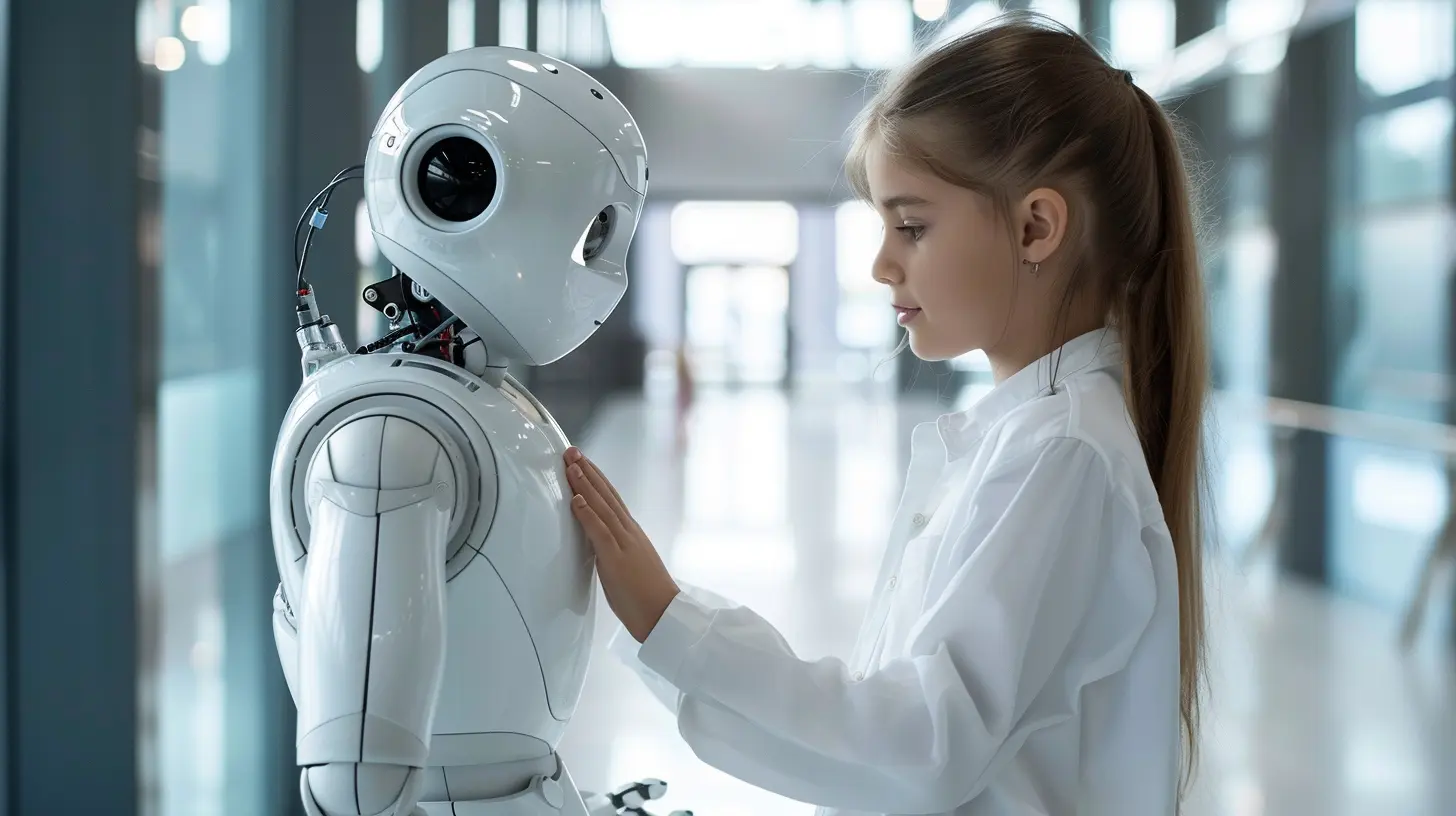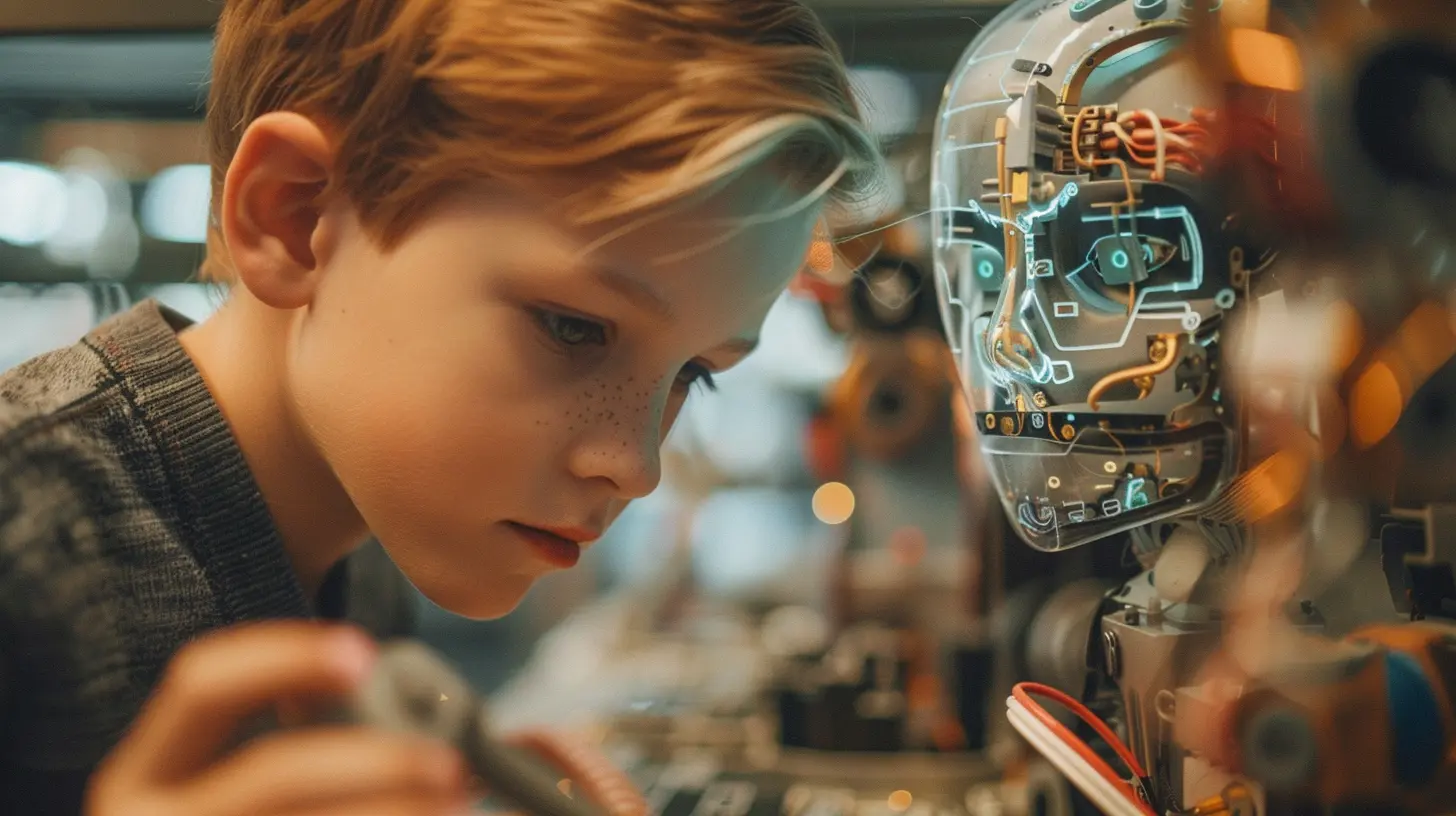The Role of Robotics in Modern STEM Education
28 August 2025
Let’s get real—STEM education is no longer just about staring at formulas on a chalkboard or fumbling with test tubes. We’re living in a world where tech is everywhere, and one of the coolest, most electrifying (pun totally intended) tools making waves? ROBOTICS.
Yep, we’re talking about hands-on, fully programmable, sometimes even talking robots that are stepping into classrooms and flipping traditional learning upside down—in the best way possible.
So, if you’ve ever wondered why everyone from kindergartners to college students are suddenly coding their own cyber sidekicks, buckle up. We’re about to dive into how robotics is taking STEM education lightyears ahead.
What’s the Big Deal About Robotics in Education?
Okay, before we dive into the nuts and bolts (😉) of this, let’s pause. Why are people raving about robots in schools?Think about it. Robotics blends science, tech, engineering, and math in a way that’s not just theoretical—it’s action-packed. It’s one thing to learn about Newton’s laws from a textbook, and it’s a whole other level to actually program a robot that moves because of those laws.
Robotics brings STEM to life. It’s hands-on. Interactive. Problem-solving filled. And most of all? It’s fun. Kids don’t even realize they’re learning when they’re building a robot to complete a maze or perform a dance. Trickery? Maybe. Genius? Definitely.
Why Robotics and STEM Go Together Like PB & J
You can totally learn STEM subjects without robots, sure. But why would you want to?Robotics is like STEM’s cooler, more engaging cousin that shows up and makes everything ten times more interesting. Here’s why they make such a killer combo:
1. Real-World Application
Robotics pulls concepts out of abstract land and drops them straight into reality. Geometry and algebra? Necessary for movement and design. Physics? Needed for calculating force and motion. Programming? That’s how you breathe life into machines.2. Trial, Error, and Epic Learning
You mess up a line of code? The robot does something totally unexpected—maybe it crashes into a wall. It’s hilarious—but it’s also a moment of learning. Robotics teaches grit. It says, “Hey, try again. You got this.”3. Instant Feedback Loop
Students don’t have to wait for a grade. They see instantly whether their code works or if the robot does the robot (literally). It's feedback in real-time, and that’s crazy powerful for learning.
Benefits of Using Robotics in the Classroom (Yes, Even for Little Kids)
Let’s squash a myth real quick: Robotics isn’t just for whiz-kid high schoolers or college students tinkering away in labs. Nope. Even elementary schoolers can—and should—get in on the buzz.🧠 Boosts Critical Thinking Like Wildfire
Kids become creators, not just consumers. They aren’t just using technology—they’re building it, tweaking it, problem-solving on the fly.🧩 Encourages Collaboration and Teamwork
Robotics projects are rarely solo missions. Whether it's building a robot from scratch or figuring out how to make it avoid obstacles, students are constantly bouncing ideas off each other. Hello, teamwork skills!🔧 Teaches Technical & Soft Skills in One Go
Sure, kids learn how to code and design, but they also build patience, communication, and the resilience to keep trying when things get complicated.💡 Sparks Creativity
Give a group of students the same build kit, and you’ll get a dozen different robots. It’s fascinating to watch how kids interpret a challenge and come up with imaginative solutions.
Breaking Down the Core STEM Subjects with Robotics
Let’s dissect how robotics turbocharges each chunk of the STEM acronym:🚀 Science
Want to understand sensors and energy? Robotics gives students the chance to explore physical science, environmental science, and even biology (hello, robo-bugs!) through hands-on experimentation.💻 Technology
From drag-and-drop coding to advanced languages like Python or C++, robotics introduces students to real programming in a way that feels like play.🛠️ Engineering
Here’s where the building magic happens. Kids learn about structural design, material strength, and mechanical systems by doing—not by reading about it.🧮 Math
Geometry, algebra, and even calculus sneak into robotics without feeling dry. Whether it’s measuring angles for turning or calculating distances for sensors, math comes alive.Robotics = The Gateway to 21st-Century Skills
Forget the boring old “learn now, use later” model. Robotics is very now. And the skills it promotes? They're what employers are screaming for.🌍 Global Competency
In a world that’s increasingly automated and tech-driven, understanding robotics isn’t just a bonus—it’s borderline essential.🧠 Problem-Solving Like a Boss
When students face real-world engineering challenges (like how to get a robot up a ramp without toppling over), they develop razor-sharp problem-solving skills.📣 Communication and Leadership
Robotics often involves presentations, team pitches, and even competitions. Students learn to articulate ideas, defend choices, and lead teams.The Role of Robotics Competitions (Yes, It Gets Fierce!)
Ever heard of FIRST Robotics, VEX, or Botball? These aren't your average science fairs—they’re full-blown, high-energy battles of brilliance where students bring their bots to fight (metaphorically, of course).🎯 Motivation Through Competition
Robotics competitions give students a goal and a deadline—two things that magically make them insanely motivated.🎖️ Building Confidence
When your robot survives the round or destroys the challenge? That’s a major confidence boost. And hey, even if it fails spectacularly, students still walk away with experience and grit.Tools of the Trade: How Students Get Started with Robotics
Here are some tools and platforms that make robotics education accessible (and ridiculously fun):- LEGO Mindstorms / SPIKE Prime – Perfect for beginners and younger students
- Arduino – For those who want to get their hands dirty with real electronics
- Raspberry Pi – Great for combining robotics with computing and programming
- VEX Robotics – Ideal for older students and competitions
- Scratch / Blockly / Tynker – Visual programming options for the newbies
No matter the age or skill level, there's something in the robotics space that can spark that “Aha!” moment.
The Inclusion Revolution: Robotics for All
Let’s talk inclusivity. Robotics isn’t just for the rich schools with big budgets anymore. With cheaper kits, open-source software, grants, and community programs, robotics is breaking down financial and social barriers.And guess what? It’s also leveling the gender playing field. More girls are diving into robotics than ever before, smashing stereotypes and building bots better than the boys (just saying 😏). There’s still work to do, but we’re moving in the right direction.
Teachers + Robots = Unstoppable Duo
Now, a robot can’t replace a great teacher (sorry, Siri), but it can be a phenomenal sidekick. When teachers integrate robotics into their lessons, they’re not handing over control—they’re amplifying their impact.Plus, with more professional development and accessible curricula, educators aren’t just winging it. They’re becoming robotics ninjas in their own right.
Challenges? Yeah, They Exist. But So Do Solutions.
Let’s not pretend it's all glitter and gears. There are hurdles, like:- Funding (Because robots aren’t free)
- Lack of trained educators
- Tech breakdowns (ugh)
But the good news? More grants, professional learning communities, and plug-and-play kits are making robotics education smoother and more accessible every year.
Sneak Peek Into the Future: AI Meets Robotics in STEM
Here’s where it gets juicy. The future of robotics in STEM is deeply tied to artificial intelligence. We’re not just talking robots that follow commands—we’re talking about machines that learn and adapt.Imagine students working with AI-powered bots that can analyze data, make decisions, and interact in more human-like ways. That’s not sci-fi—it’s around the corner.
Final Thoughts: Robots Are Just Getting Started
So, what’s the role of robotics in modern STEM education? It's center-stage, baby.Robotics is more than tech for tech’s sake. It’s a fun, dynamic, and insanely effective way to teach real-world STEM skills while preparing students for a future that’s already knocking on the door.
Whether it's a kindergartner lighting up at seeing their robot move for the first time, or a teen winning a national robotics comp, the impact is real, powerful, and utterly electrifying.
And the best part? We’re just scratching the surface.
all images in this post were generated using AI tools
Category:
Stem EducationAuthor:

Monica O`Neal
Discussion
rate this article
1 comments
Duke McClellan
Robotics enhances STEM education by fostering hands-on learning and critical thinking. It engages students, making complex concepts more approachable and encouraging innovation in problem-solving.
August 29, 2025 at 12:12 PM

Monica O`Neal
Thank you for your insightful comment! I completely agree that robotics is a powerful tool for enhancing STEM education by promoting hands-on learning and critical thinking skills. It truly makes complex concepts more accessible and inspires innovative problem-solving.


